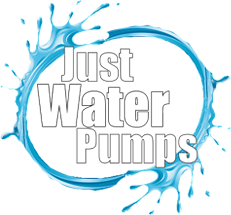Domestic Water Pump Installation Tips
Try to install your water pump as close to your water source as possible. Find a location with a firm base and close to your power supply. The pump must be installed in a weather proof location or otherwise under a pump cover. This helps protects your pump from the weather which can cause damage to your pump and is not covered by the manufacturers warranty. Ensure your pumps location is in a well ventilated area to protect it from the extreme Australian temperatures, possible flooding, vermin and insects. We recommend flexible fittings for your water pump installation. This allows for some flexibility between your water tank and pump and reduces the stress on your fittings.
Correct installation of your water pump is critical to make sure your pump runs smoothly and reliably. The inlet connection is one of the most critical parts of your installation. Here are some important factors for best practice when installing your suction pipe:
- Your inlet pipework size must be the equal to or larger than the pump inlet.
- Keep your inlet pipework as straight as possible and avoid 90° bends. This restricts flow considerably and drops your pump performance. We recommend flexible pipework that allows soft bends in the your pipework.
- Avoid bends within 150mm of your pump inlet.
- Install a barrel union on your pump inlet pipework for easy removal and pump servicing.
- Install a Y-Strainer on your pump inlet to protect your pump from debris damaging your pump.
- Make sure all your fittings use Teflon tape and create an airtight seal to prevent air entering your system.
- If your water pump is being installed above your water source, you must fit a non return valve on the end of the suction pipework.
NOTE: Leaks on your suction end are the largest cause of poor pump performance and also the most difficult to detect. Use thread tape on fittings and make sure isolation valves are installed between water tanks and pumps for both maintenance and testing.
All domestic water pumps and even self priming models, need to be manually primed. That is, we need to bleed all the air that is inside the pump housing and displace it with water. Priming the pump also helps to lubricate your mechanical seal. Without priming your pump prior to turning your water pump on will cause irreparable damage to the mechanical seal and is not covered under warranty.
How to Prime you Water Pump?
- Ensure the pump power supply is disconnected.
- Turn the valve off between your water tank and water pump.
- Unscrew your pump priming port bolt.
- Fill the pump body and suction line completely with clean water via priming port. Alternatively, if your water tank is above ground, you can slowly open the valve between your water tank and pump. This will start pushing water through the lines and fill your pump body. When the pump body is full, turn the valve off.
- Screw your pump priming port and ensure it's tight.
- Open the valve between your water tank and pump.
- Check all your inlet fittings and pipework to make sure there are no leaks.
- Turn your water pump on at the power supply with a tap open.
- Once the pump is running smoothly with good flow, turn the tap off. The pump should turn off once the line has pressurized.
NOTE: Leaks on your suction end are the largest cause of poor pump performance and also the most difficult to detect. Use thread tape on fittings and make sure isolation valves are installed between water tanks and pumps for both maintenance and testing.



